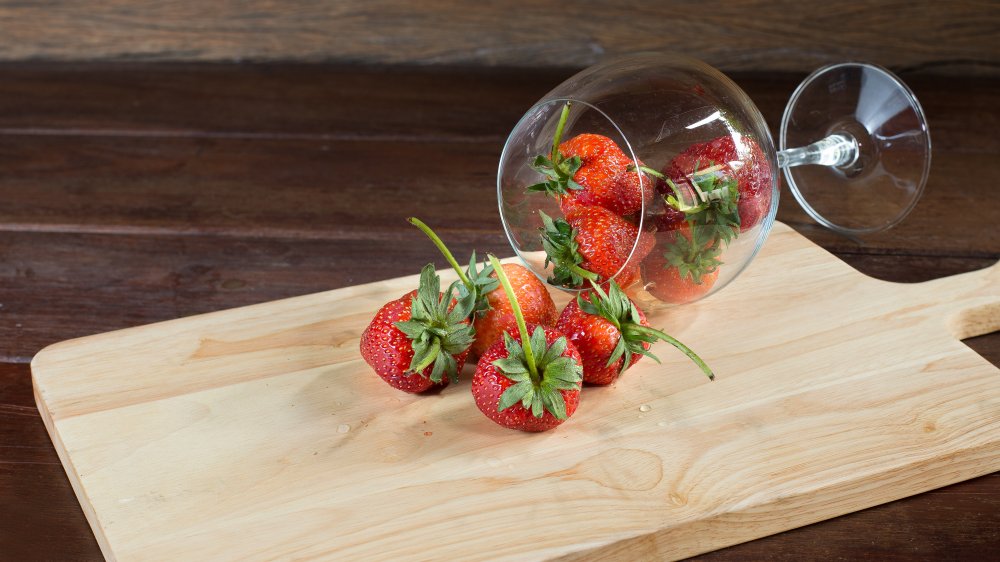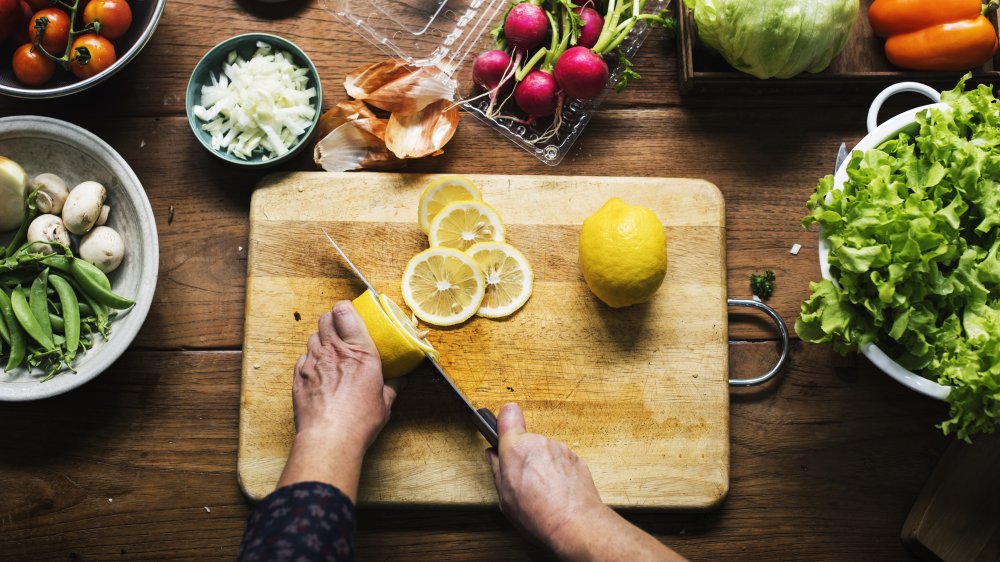This Clever Hack Removes Annoying Stains From Your Cutting Board
Your wooden cutting board bears the crisscrossed scars of all the strawberries you've cut, all the carrots you've julienned, all the basil you've chiffonaded, all the garlic you've minced, and all the chicken you've marinated on it. Your beloved chopping block has born the brunt of paring knives, bread knives, cheese knives, and cleavers. These cuts and scrapes you can heal. All it takes is a monthly, hours-long coating in mineral oil, and your board is back in business (via Epicurious).
And then, one day, you're cutting your potatoes into thick batons, sipping on a glass of red, red, wine, and listening to your favorite Alanis Morissette album — or maybe you're jiving out to Luke Bryan's One Margarita? Either way, your elbow strays, and your wine spills. Your beautiful wooden cutting board is sopping it all up like, in a bizarre Pinocchio moment, it's suddenly come to life and turned to wine as the answer to its existential problems.
It's stained, yes. But not irreversibly. All you need is a fresh lemon or two, a bench scraper, and a little bit of cooking salt.
A step by step guide to cleaning your cutting board with lemon and salt
The salt is the hardest thing about this hack. You'll want something course and abrasive enough to work the stains out of your wood. Sea salt or kosher salt will do the trick (via Real Simple and Epicurious). The rest is child's play.
Simply cover your cutting board, liberally, in salt. Then, using the same cutting board, cut a lemon in half. Now, take the lemon, flesh-side down, and rub your salt into the grains of the cutting board. You'll want to squeeze the lemon as you go, gradually releasing more juice (via Kitchn). When you've thoroughly scoured your board, let the salt and lemon juice do your thing while you take a five-minute break.
Depending on the amount of dirt accumulated in your board's grains, you'll notice that the lemon juice salt mixture has turned grayish. Scrape this off with a bench scraper. Then, rinse the board gently in water (or, if you prefer, with a wet sponge), pat it with a dishtowel, and stand it up to air dry. Say hello to your new, fresh-smelling, and stain-free chopping block.

